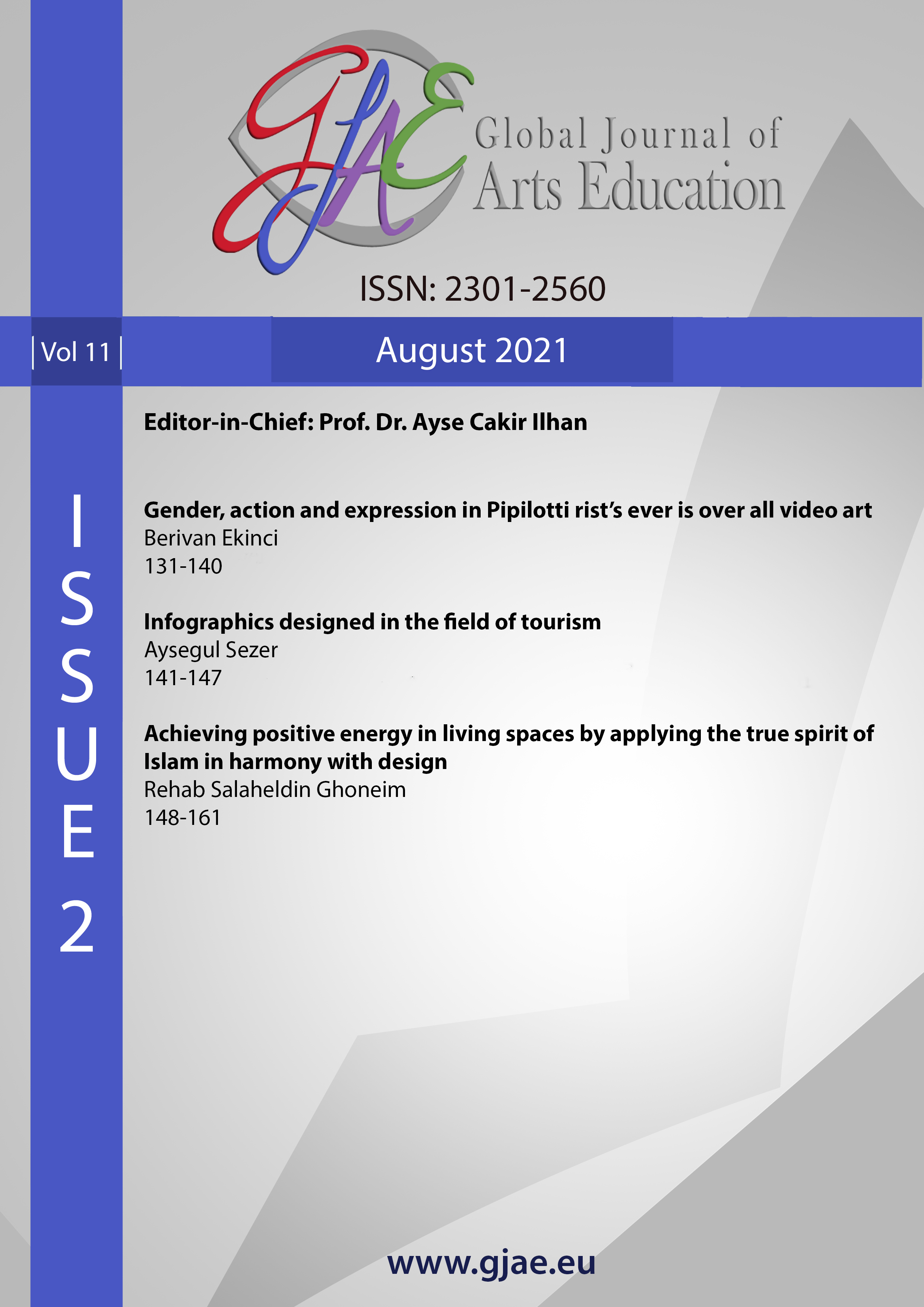Infographics designed in the field of tourism
Main Article Content
Abstract
Apart from facilitating human life, changes occurring in technology and communication also bring along a confusion at the same time with the mass of information it creates in today’s world. When considered with respect to the field of tourism, infographics, which visually ensure that the complexity that occurs as a result of these changes are systematic and understandable in general, provide opportunities such as creating an environment of trust with the visual language they offer, being educative, revealing complex information and making it more explanatory, being persuasive, being directive, saving of time and stimulation. Infographics, which appear as print media in the field of tourism, also aim to produce design solutions that meet today's needs by appearing in an interactive environment and on the web. In this study, how infographics, which aim to facilitate the understanding of the environment in which people exist in today's information age, contribute to the field of tourism, which design solutions they use and the facilities they provide to human life in this field will be discussed by searching the new approach models used today.
Keywords: Graphic design, infographic, design, tourism, travel.
Downloads
Article Details

This work is licensed under a Creative Commons Attribution 4.0 International License.
Authors who publish with this journal agree to the following terms:
- Authors retain copyright and grant the journal right of first publication with the work simultaneously licensed under a Creative Commons Attribution License that allows others to share the work with an acknowledgement of the work's authorship and initial publication in this journal.
- Authors are able to enter into separate, additional contractual arrangements for the non-exclusive distribution of the journal's published version of the work (e.g., post it to an institutional repository or publish it in a book), with an acknowledgement of its initial publication in this journal.
- Authors are permitted and encouraged to post their work online (e.g., in institutional repositories or on their website) prior to and during the submission process, as it can lead to productive exchanges, as well as earlier and greater citation of published work (See The Effect of Open Access).

